Abstract
Adenylate energy charge (AEC) and adenine nucleotide levels of isolated winter wheat (Triticum aestivum L. cv Kharkov 22 MC) cells exposed to various low temperature stresses were determined. During ice encasement at −1°C, nucleotide levels decreased gradually in approximate relation to a decline in cell viability. AEC values remained high even after 5 weeks of icing when cell viability was severely reduced. When isolated cell suspensions were exposed to various cooling and freezing regimes ranging from −10 to −30°C, cell damage was dependent on the minimum temperature imposed and the duration of exposure to the freezing stress. The levels of all three adenine nucleotides declined with increasing severity of the imposed stress, but AEC values remained high even at −30°C when nearly all of the cells were killed. The addition of 10 millimolar Ca2+ to cell suspensions enhanced survival during low temperature stresses, but did not influence nucleotide levels other than through its effect on cell viability. These results indicate that impairment of the ion transport system during the early stages of ice encasement prior to a detectable decline in cell viability cannot be attributed to changes in the adenylate energy charge system of the cell.
Full text
PDF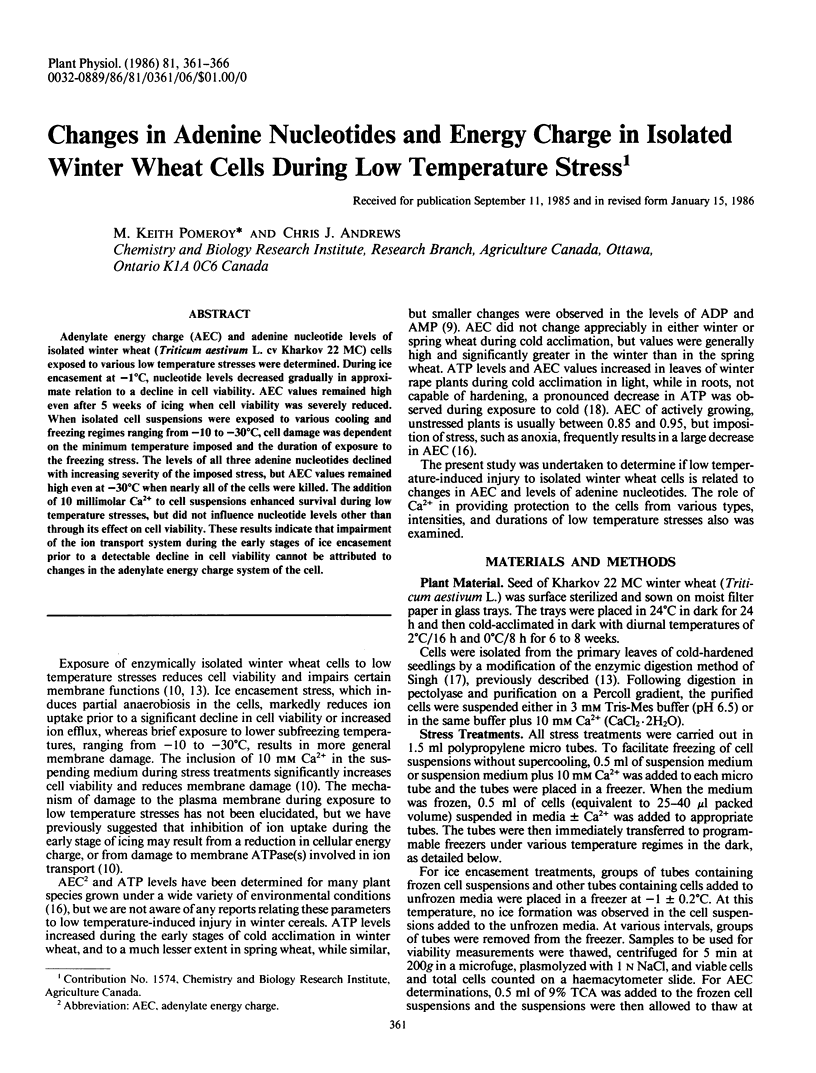
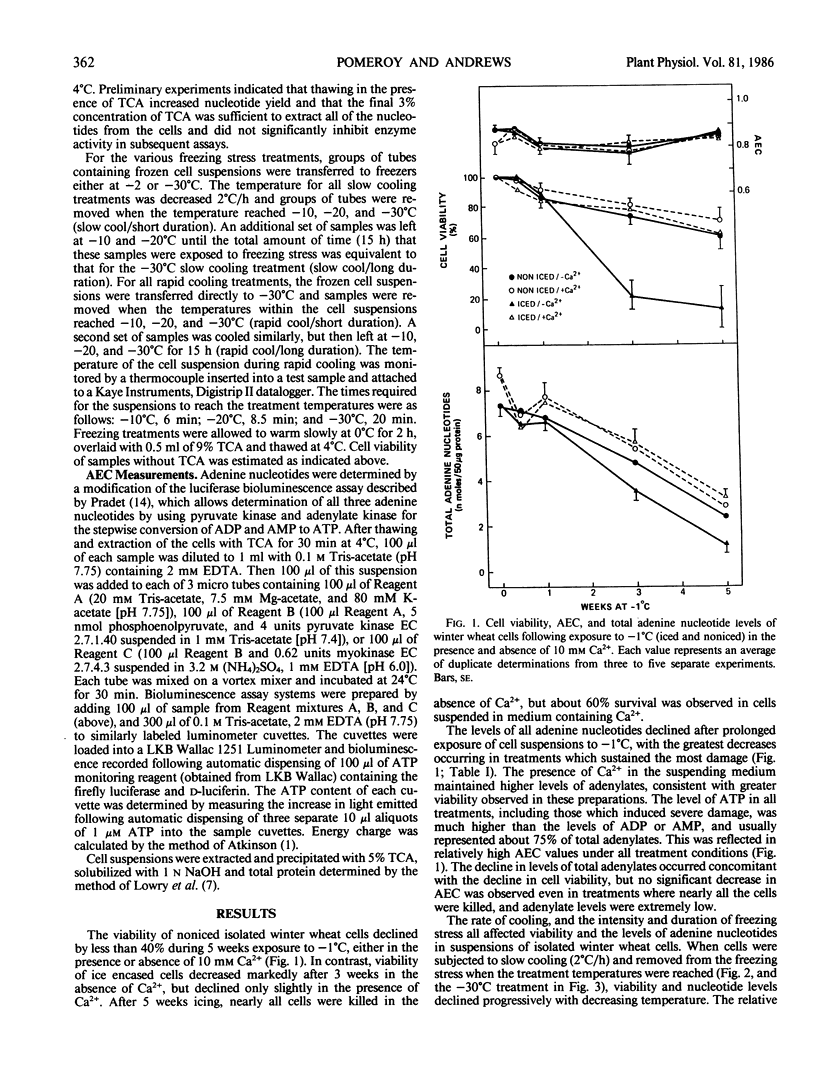
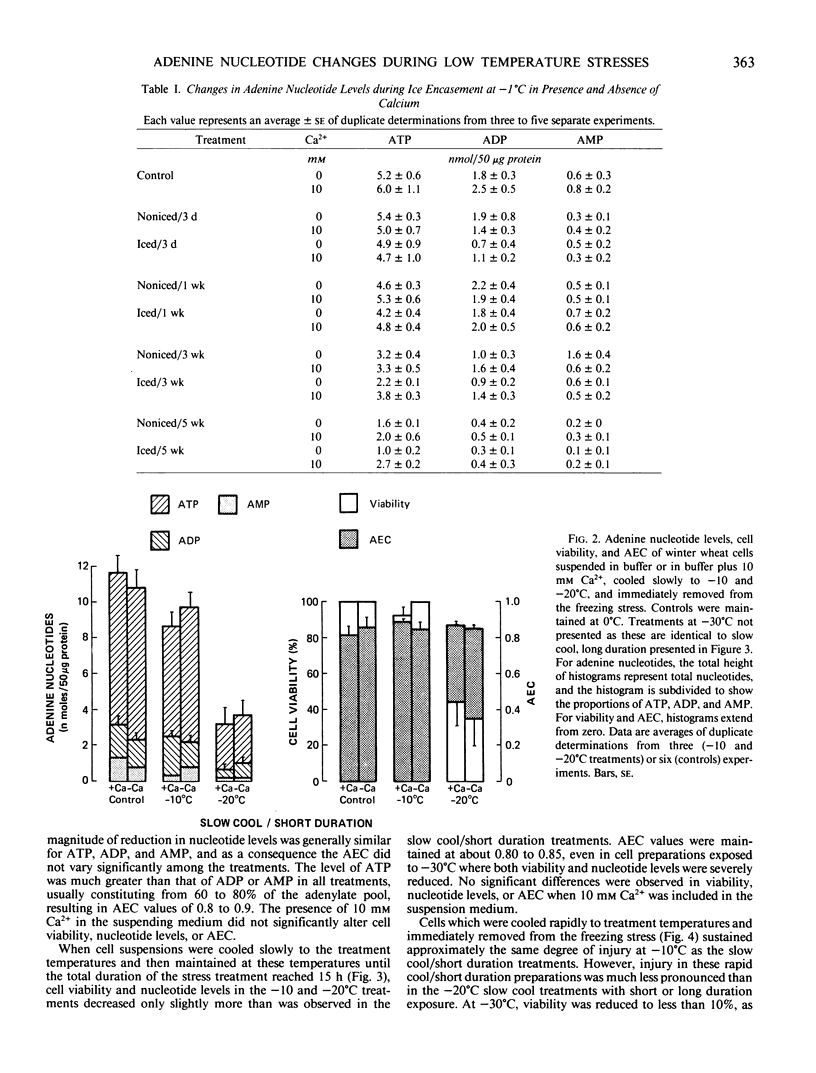
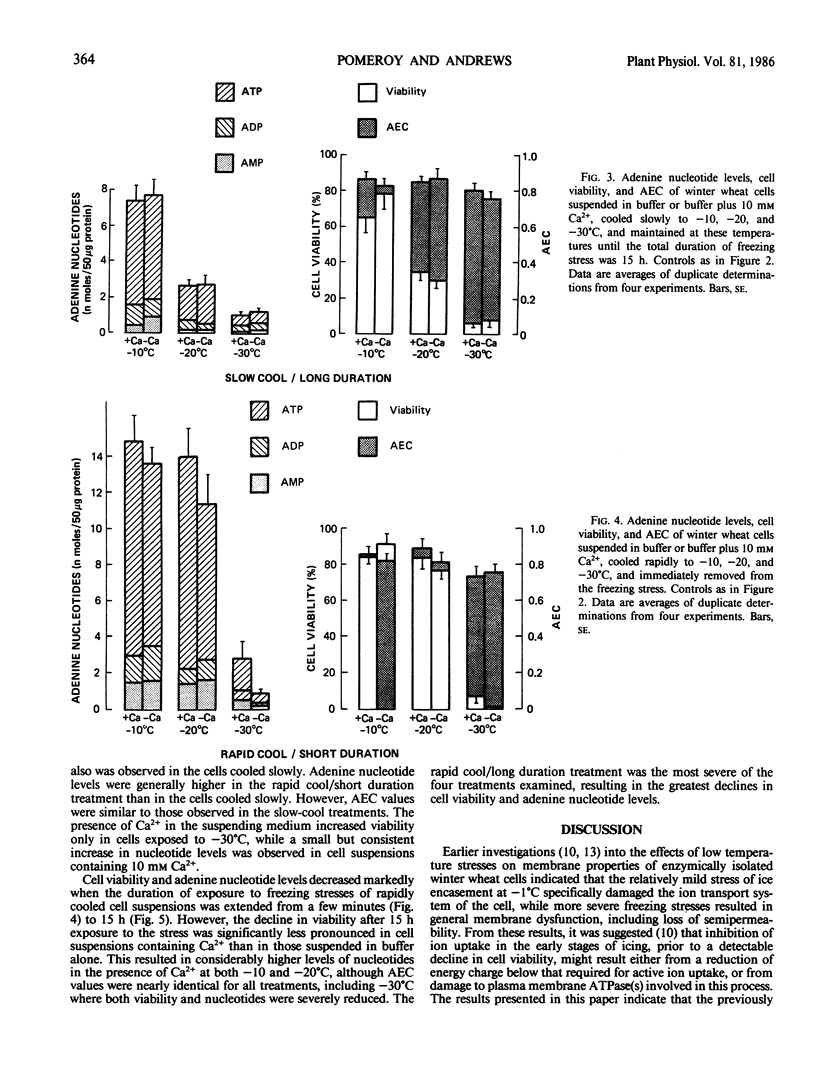
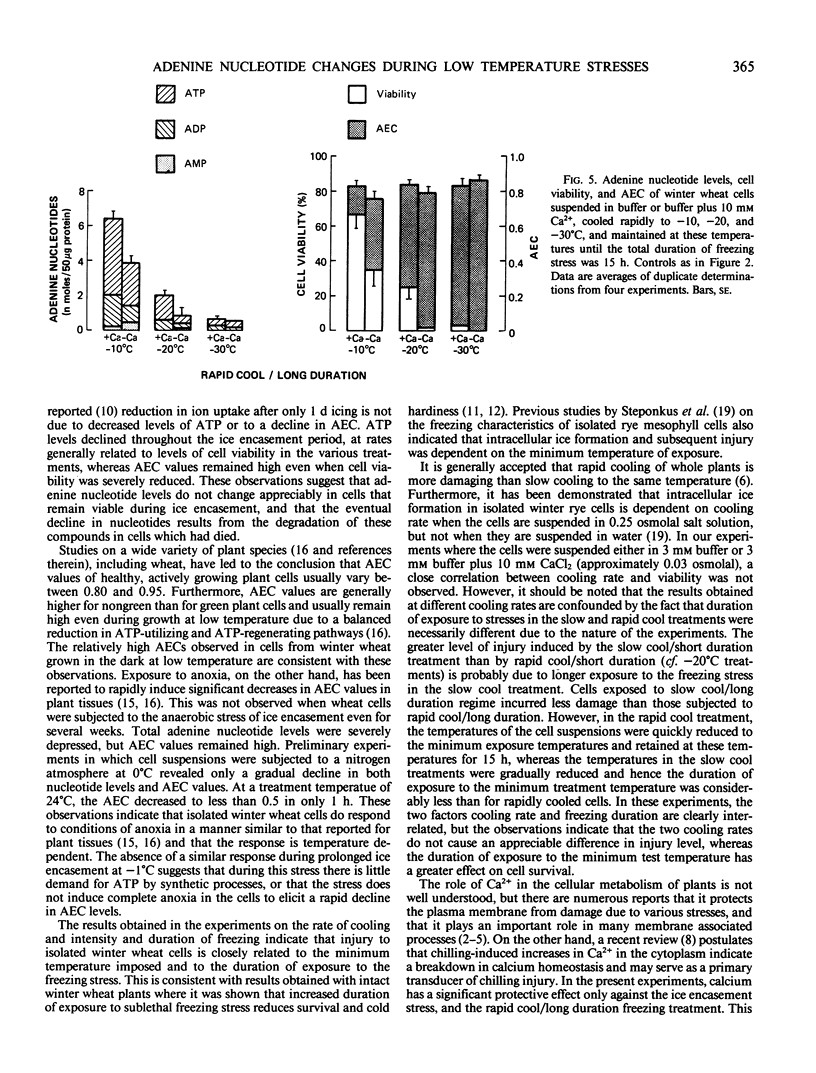
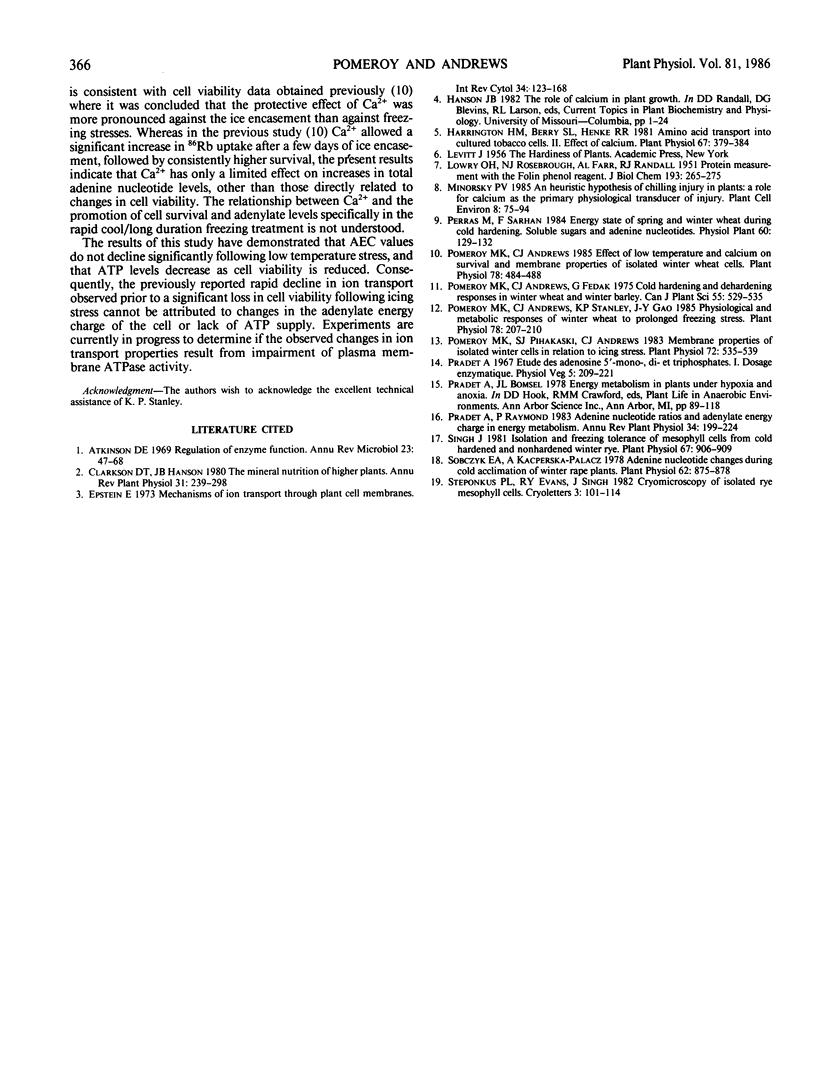
Selected References
These references are in PubMed. This may not be the complete list of references from this article.
- Atkinson D. E. Regulation of enzyme function. Annu Rev Microbiol. 1969;23:47–68. doi: 10.1146/annurev.mi.23.100169.000403. [DOI] [PubMed] [Google Scholar]
- Harrington H. M., Berry S. L., Henke R. R. Amino Acid Transport into Cultured Tobacco Cells: II. EFFECT OF CALCIUM. Plant Physiol. 1981 Feb;67(2):379–384. doi: 10.1104/pp.67.2.379. [DOI] [PMC free article] [PubMed] [Google Scholar]
- LOWRY O. H., ROSEBROUGH N. J., FARR A. L., RANDALL R. J. Protein measurement with the Folin phenol reagent. J Biol Chem. 1951 Nov;193(1):265–275. [PubMed] [Google Scholar]
- Pomeroy M. K., Andrews C. J. Effect of low temperature and calcium on survival and membrane properties of isolated winter wheat cells. Plant Physiol. 1985 Jul;78(3):484–488. doi: 10.1104/pp.78.3.484. [DOI] [PMC free article] [PubMed] [Google Scholar]
- Pomeroy M. K., Andrews C. J., Stanley K. P., Ji-Yin-Gao Physiological and metabolic responses of winter wheat to prolonged freezing stress. Plant Physiol. 1985 May;78(1):207–210. doi: 10.1104/pp.78.1.207. [DOI] [PMC free article] [PubMed] [Google Scholar]
- Pomeroy M. K., Pihakaski S. J., Andrews C. J. Membrane properties of isolated winter wheat cells in relation to icing stress. Plant Physiol. 1983 Jun;72(2):535–539. doi: 10.1104/pp.72.2.535. [DOI] [PMC free article] [PubMed] [Google Scholar]
- Singh J. Isolation and Freezing Tolerances of Mesophyll Cells from Cold-hardened and Nonhardened Winter Rye. Plant Physiol. 1981 May;67(5):906–909. doi: 10.1104/pp.67.5.906. [DOI] [PMC free article] [PubMed] [Google Scholar]
- Sobczyk E. A., Kacperska-Palacz A. Adenine Nucleotide Changes during Cold Acclimation of Winter Rape Plants. Plant Physiol. 1978 Dec;62(6):875–878. doi: 10.1104/pp.62.6.875. [DOI] [PMC free article] [PubMed] [Google Scholar]


